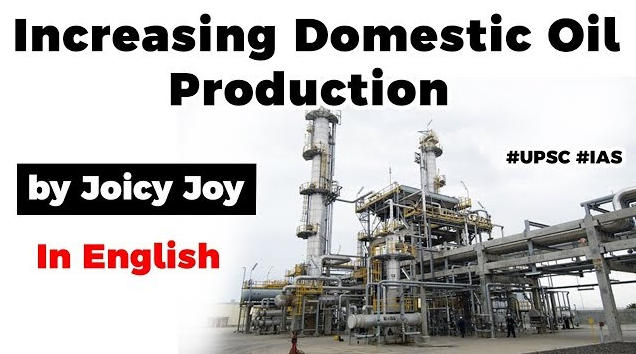Table of Contents
BACKGROUND
- With rising domestic fuel consumption, India’s crude imports have continued to rise.
- India imported 226.5 million tonnes of crude in 2018- 19 (a 38% increase over 2009-10).
- However, in the same period, annual domestic production of crude slipped from 37.7 million tonnes to 34.2 million tonnes.
REASONS
- Global Oil Prices Crash (decline in investment): Since the 2014 oil price crash, global majors to national oil companies have cut upstream spending (exploring new oil fields), slashed breakeven costs in existing projects, and divested ventures with low or slow
- Climate Change: Mounting pressure due to climate change is prompting oil and gas players to diversify into clean energy.
- This, together with the US shale sector attracting a large share of investments, led to a decline in capital flows into conventional exploration and production.
- Bureaucratic Apathy: Hydrocarbon licensing policies since 2016 have progressively reduced redundant layers of approvals and introduced improved fiscal terms.
- However, bureaucratic processes burden older production-sharing contracts (PSCs) that account for most of the country’s oil and gas output.
- Securing all the approvals for a field development plan in a PSC can, on average, take up to 20 months, resulting in costly delays in commercialising discovered fields.
- Policy Issues: Fiscal incentives for the use of enhanced recovery methods in oil and gas fields was a good start but does not go far enough.
- The government provided a 50% cess waiver on the use of enhanced recovery methods, but it would yield around 5% return on revenue. This according to producers’ estimates is unviable for most projects.
What is Enhanced Oil Recovery?
- Enhanced Oil Recovery (EOR) is the process of increasing the amount of oil that can be recovered from an oil reservoir, usually by injecting a substance into an existing oil well to increase pressure and reduce the viscosity of the oil.
- With a conventional oil well, the natural pressure in the reservoir pushes the oil to the surface or a pump is used to create the pressure. This usually results in a recovery of about 25% of a well’s oil reserves.
- Enhanced oil recovery increases oil recovery by up to 15%.
Methods of Enhanced Oil Recovery
- Thermal recovery: which involves the introduction of heat such as the injection of steam to lower the viscosity, or thin, the heavy viscous oil, and improve its ability to flow through the reservoir.
- Gas injection: which uses gases such as nitrogen, or carbon dioxide (CO2) that expand in a reservoir to push additional oil to a production wellbore, or other gases that dissolve in the oil to lower its viscosity and improves its flow rate.
- Chemical injection: which can involve the use of long- chained molecules called polymers to increase the effectiveness of waterfloods, or the use of detergent- like surfactants to help lower the surface tension that often prevents oil droplets from moving through a
- CO2 injection – which uses CO2 to act as a solvent, a pressurizing agent, and reduces the oil’s viscosity.
New Exploration Licensing Policy (NELP)
- Production-Sharing Contracts were introduced by New Exploration Licensing Policy 1997.
- This contract is made between the government and a contractor (oil/gas exploration company).
- Once the contractor has recovered the cost of exploration, then he’ll have to share part of his profit with the Government (as per the terms and conditions in production sharing contract.)
Issues with production-sharing contracts
- In the difficult terrain, it takes many years to complete survey, research, exploration. But production sharing contracts allow only 8 years to finish this.
- It is difficult for the Government to check the accuracy of the contractor’s account and get the correct share.
Different Categories Hydrocarbon Blocks Allocation
- Nomination basis: areas given prior to auction rounds
- Pre-NELP and NELP: where areas were given through auctions based on production sharing contracts.
- HELP regime: a uniform licensing regime based on the revenue sharing model and Open Acreage Licensing Policy (OALP).
Latest Burning Issues | Free PDF






















 WhatsApp
WhatsApp